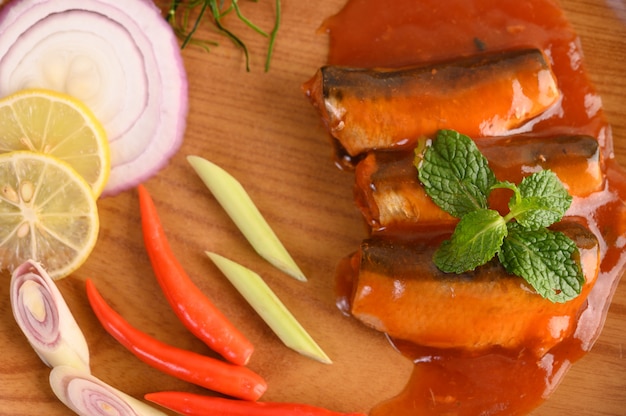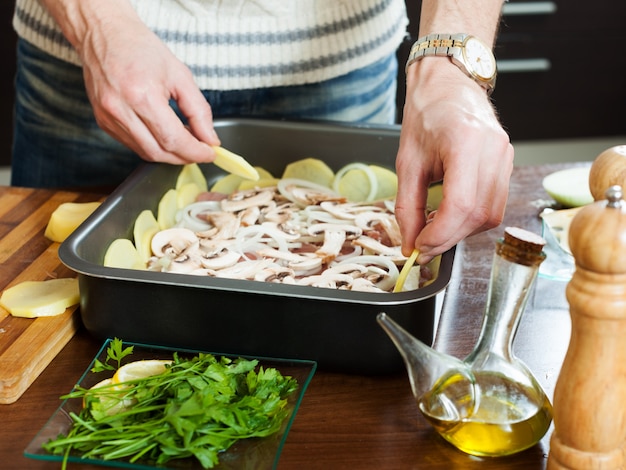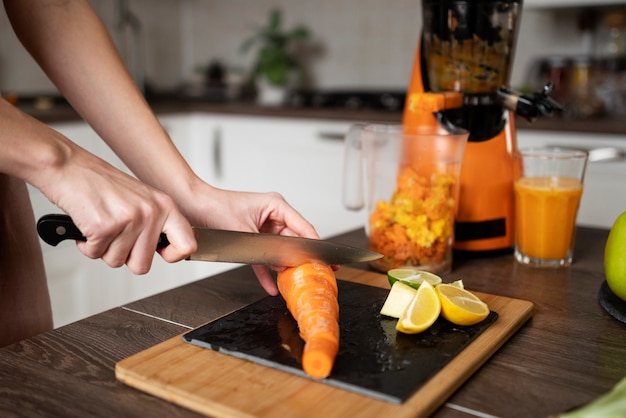Ah, lobster tails. The mere mention of them conjures up images of luxurious feasts and elegant gatherings. But let's be honest, sometimes even the most seasoned cook can feel a little intimidated by these magnificent crustaceans. Don't worry, I'm here to guide you through the process, sharing my hard-earned knowledge and a few insider tips to ensure your lobster tails turn out perfectly cooked, succulent, and absolutely delicious.
This comprehensive guide will take you on a journey from choosing the perfect lobster tail to mastering various cooking methods, covering everything from the essential techniques to the delightful finishing touches. So, grab a comfortable seat, put on your apron, and let's embark on this culinary adventure together.
(Part 1) Choosing the perfect lobster tail: It All Starts With Quality

The foundation of a great lobster experience is choosing the right tail. It's like selecting the perfect ingredients for any dish – you want to start with something top-notch. Here's how to make sure you're getting the best lobster tail possible:
Freshness: The Key to Flavor
Freshness is absolutely paramount. A truly fresh lobster tail will be a visual delight – a vibrant, almost luminous red color, firm to the touch, and emitting a sweet, slightly briny aroma. Avoid any tails that appear dry, dull, or have an unpleasant fishy smell. Imagine the smell of a fishmonger's stall on a hot summer day – that's what you want to avoid!
Size Matters: Choosing the Right Portion
Lobster tails come in various sizes, each suitable for different purposes. Smaller tails, typically around 4-6 ounces, are ideal for individual servings, while larger tails (8-10 ounces and up) make a statement and are perfect for sharing. Personally, I prefer a nice, chunky tail – enough for a satisfying meal, but not so enormous that it feels like I'm wrestling a miniature sea creature.
Ask the Experts: The Fishmonger's Insight
Don't be shy about seeking advice from your fishmonger. They're the experts, and they can offer invaluable guidance. They'll tell you which varieties are in season, point you towards the freshest catches, and help you choose the right size for your needs.
One time, I stumbled upon a beautiful, vibrant red lobster tail from the coast of Maine. The fishmonger explained it was a special, seasonal variety, and boy, was he right! It was the most incredible lobster I'd ever had – the sweetness and delicate flavour were simply exquisite.
(Part 2) Preparing the Lobster Tail: Getting Ready for the Big Event

Now that you've found your perfect lobster tail, it's time to prepare it for its starring role. This stage is crucial for ensuring your lobster cooks evenly and results in tender, succulent meat.
Removing the Shell: Careful, It's Sharp!
First things first, you need to remove the shell. Using a sharp knife or kitchen shears, carefully cut along the underside of the tail, exposing the delicate meat within. Be mindful not to cut too deeply – a little too much enthusiasm can lead to a messy situation. You know what I'm talking about, right? Lobster meat everywhere, sticky fingers, and that fleeting moment of panic when you realise you might need a change of clothes!
Cleaning the Tail: A Fresh Start
Once you've removed the shell, give the tail a thorough rinse under cold running water. This will wash away any lingering bits of shell or grit. If you're using frozen lobster tails, ensure they are completely thawed in the refrigerator before proceeding.
Seasoning with Love: Adding Flavor to Perfection
Now comes the fun part – seasoning! While lobster is a delicious, naturally sweet delicacy, a touch of seasoning can really elevate its flavour. My go-to seasoning is simple, yet effective: a sprinkle of salt and pepper, followed by a generous squeeze of fresh lemon juice.
However, feel free to experiment! A touch of paprika, garlic powder, or even a hint of cayenne pepper can add a unique twist. Just remember to keep it simple and let the natural flavour of the lobster shine through.
(Part 3) Cooking Methods: Unlocking the Full Potential of Your Lobster

You've got the perfect lobster tail, it's prepped and ready to go. Now, the exciting part – cooking! Each method has its own unique appeal and brings out a different facet of the lobster's flavour.
Boiling: The Classic Approach
Boiling is the classic, straightforward way to cook lobster tails. It's quick, easy, and perfect when you're short on time. Simply bring a large pot of salted water to a rolling boil. Gently lower the lobster tails into the boiling water and cook for 8-10 minutes, depending on their size.
Steaming: A Delicate Touch
Steaming is a gentler approach that produces a beautifully delicate flavour. Place the lobster tails in a steamer basket over a pot of boiling water. Steam for 8-10 minutes, or until the meat is cooked through. The steam gently cooks the lobster, preserving its natural sweetness.
Grilling: Adding a Smoky Kiss
For a smoky, charred flavour, grilling is the way to go. Preheat your grill to medium heat. Place the lobster tails on the grill, flesh-side down, and cook for about 4-5 minutes per side, or until the meat is cooked through.
Baking: A Hands-Off Option
Baking is a great choice if you prefer a more hands-off approach. Preheat your oven to 400°F (200°C). Place the lobster tails on a baking sheet lined with parchment paper. Bake for 10-15 minutes, or until the meat is cooked through.
Pan-Frying: Achieving Crispy Perfection
Pan-frying creates a beautiful, golden-brown crust on the lobster tails. Heat a tablespoon of olive oil in a large skillet over medium heat. Place the lobster tails in the skillet and cook for about 4-5 minutes per side, or until the meat is cooked through. The pan-fried method delivers a delightful combination of crispy exterior and succulent interior.
(Part 4) Understanding Doneness: Deciphering the Signs of a Perfectly Cooked Lobster
One of the trickiest aspects of cooking lobster tails is knowing when they're done. Overcooked lobster becomes tough and rubbery, which is a culinary tragedy we want to avoid at all costs. Here's how to ensure your lobster is cooked to perfection:
The Colour Test: A Visual Cue
The easiest way to gauge doneness is by observing the colour change. As the lobster cooks, the flesh will transform from translucent to opaque. The shell will also turn a vibrant red. This change happens relatively quickly, so keep a watchful eye!
The Flex Test: A Tactile Approach
Another reliable method is the flex test. Gently bend the lobster tail. If it's cooked, it will feel firm and springy. If it bends easily, it needs a little more cooking time.
The Meat Test: A Definitive Confirmation
If you're still unsure, carefully cut into the thickest part of the tail with a sharp knife. The meat should be opaque and white, not translucent or pink.
(Part 5) Serving Your Lobster Tails: A Feast for the Senses
You've cooked your lobster tails to perfection, and now it's time to enjoy the fruits of your labour. But let's not forget the importance of presentation!
Presentation Matters: A Culinary Canvas
Don't just plop your lobster tail onto a plate. A little effort goes a long way! Place your lobster tail on a bed of crisp greens, drizzle with melted butter, and garnish with fresh herbs like parsley or chives for a touch of elegance.
side dish Symphony: Complementary Flavors
Lobster tails are delicious on their own, but they truly shine when paired with the right side dishes. Think light, fresh, and complementary flavours that enhance, not overpower, the delicate sweetness of the lobster. Here are some of my favourites:
- corn on the cob: A classic pairing that adds a touch of sweetness to the meal. Serve it with a pat of butter and some fresh herbs.
- roasted asparagus: This healthy and flavorful side dish complements the lobster beautifully.
- potato salad: A hearty side dish that's perfect for a summer meal.
- Mixed Green Salad: A light and refreshing salad adds a touch of acidity and freshness to the meal.
Sauce It Up: The Finishing Touches
Don't forget the sauce! A simple melted butter sauce is a classic, but feel free to experiment. A lemon-herb sauce, a garlic-butter sauce, or even a touch of chili oil can add a unique twist.
(Part 6) Beyond the Tail: Other Lobster Delights
Lobster tails are amazing, but let's explore some other delicious ways to enjoy this culinary treasure:
lobster bisque: A Classic comfort food
This creamy soup is a classic for a reason. It's rich, flavorful, and perfect for a cold winter day. The bisque is made with a base of lobster stock, milk, cream, and spices, with chunks of lobster meat adding a luxurious touch.
lobster rolls: A New England Favorite
Lobster rolls are a summer favourite, especially in New England. They're made with chunks of lobster meat piled high on a toasted bun with a simple mayonnaise dressing. The combination of succulent lobster, fluffy bun, and creamy dressing is truly irresistible.
lobster mac and cheese: A Decadent Treat
This is a decadent and indulgent dish that's perfect for a special occasion. Lobster mac and cheese is made with chunks of lobster meat baked in a creamy cheese sauce, often with a touch of nutmeg or cayenne pepper for added depth.
Lobster Pasta: Simple Elegance
Lobster pasta is a simple yet elegant dish that's perfect for a light lunch or dinner. It's made with cooked lobster meat tossed in a pasta sauce, often with garlic, tomatoes, and a splash of white wine. The result is a symphony of fresh, vibrant flavors.
(Part 7) Leftover Lobster: Don't Waste a Morsel!
Let's be honest, sometimes we end up with leftover lobster. But don't despair! There are plenty of ways to make use of those delectable bits of lobster meat.
Lobster Salad: A Classic Revival
Lobster salad is a classic way to use leftover lobster. It's made with chunks of lobster meat mixed with mayonnaise, celery, and a touch of lemon juice. It's delicious served on crackers, in lettuce wraps, or on a bed of greens.
Lobster Pizza: A Unique Twist
Lobster pizza is a delicious and unconventional way to use leftover lobster. Top your favourite pizza crust with chunks of lobster meat, a drizzle of alfredo sauce, and some fresh herbs.
Lobster Dip: A Party Favorite
Lobster dip is a creamy and delicious dip that's perfect for a party. It's made with chunks of lobster meat mixed with cream cheese, sour cream, and a touch of lemon juice.
Lobster Risotto: Rich and Flavorful
Lobster risotto is a rich and flavorful dish that's perfect for a special occasion. It's made with cooked lobster meat and arborio rice, simmered in a broth seasoned with white wine, garlic, and herbs.
(Part 8) A Quick Guide to Cooking Times: Timing is Key
Here's a table with some general cooking times for lobster tails, based on size and cooking method. Remember, these are just guidelines – it's always best to check the doneness using the methods outlined above.
| Size (oz) | Boiling (minutes) | Steaming (minutes) | Grilling (minutes) | Baking (minutes) | Pan-frying (minutes) |
|---|---|---|---|---|---|
| 4-6 oz | 8-10 | 8-10 | 4-5 | 10-12 | 4-5 |
| 6-8 oz | 10-12 | 10-12 | 5-6 | 12-15 | 5-6 |
| 8-10 oz | 12-15 | 12-15 | 6-7 | 15-18 | 6-7 |
(Part 9) Frequently Asked Questions: Clearing Up Common Queries
You've probably got a few questions, haven't you? Here are some of the most common ones, answered for you:
1. Can I Freeze Lobster Tails?
Yes, you can freeze lobster tails. To freeze them, wrap them tightly in plastic wrap and then place them in a freezer-safe bag. They can be frozen for up to 3 months. When thawing, defrost them in the refrigerator overnight for best results.
2. How do I Tell if a Lobster Tail is Fresh?
A fresh lobster tail should be firm to the touch, have a bright red colour, and smell sweet and slightly salty. Avoid any tails that look dry, dull, or have a fishy odour.
3. Can I Cook Lobster Tails in the Microwave?
It's not recommended to cook lobster tails in the microwave. microwave cooking can make the lobster meat rubbery and dry. Stick to traditional methods like boiling, steaming, grilling, baking, or pan-frying for optimal results.
4. Can I Eat the Shell?
No, you shouldn't eat the shell. It's tough and indigestible. However, you can save the shell and use it to make a delicious lobster stock.
5. What are the Best Wines to Pair with Lobster?
Lobster pairs well with a variety of wines, but some of the best choices include:
- Chardonnay: This crisp white wine complements the sweetness of the lobster meat.
- Sauvignon Blanc: This refreshing white wine has a zesty acidity that cuts through the richness of the lobster.
- Pinot Noir: This light-bodied red wine has a delicate flavour that doesn't overpower the lobster.
- Riesling: This sweet white wine can be a surprisingly good pairing for lobster, especially when grilled or baked.
(Part 10) Conclusion: The Joy of Lobster
There you have it! You've now got all the information you need to cook the perfect lobster tail. It's a true culinary delight, and an experience you'll want to repeat again and again. So, go on, get yourself some fresh lobster tails, gather your ingredients, and get cooking. The satisfaction of a perfectly cooked lobster tail, enjoyed with friends or family, is truly a delicious reward for your culinary efforts.
Everyone is watching

Corn on the Cob: The Ultimate Guide to Perfectly Cooked Ears
Healthy MealsAh, corn on the cob. Just the name evokes images of sunny days, barbecues, and that sweet, juicy flavour that ...

Perfect Pork Roast Oven Cooking Time: A Guide to Delicious Results
Healthy MealsThere's something truly satisfying about a perfectly roasted pork. The aroma alone is enough to make your mout...

Ham Cooking Time: How Long to Bake, Smoke, or Boil a Delicious Ham
Healthy MealsAh, ham. It's a classic, isn't it? A real crowd-pleaser, especially around holidays. And when done right, it'...

Scallops: The Ultimate Guide to Perfect Cooking
Healthy MealsAh, scallops. Those delicate, sweet, and utterly delicious morsels of the sea. They hold a special place in my...

Spaghetti Squash: The Ultimate Guide to Cooking and Serving
Healthy MealsRemember that time you saw spaghetti squash at the supermarket, looking all bumpy and strange, and thought, "W...
